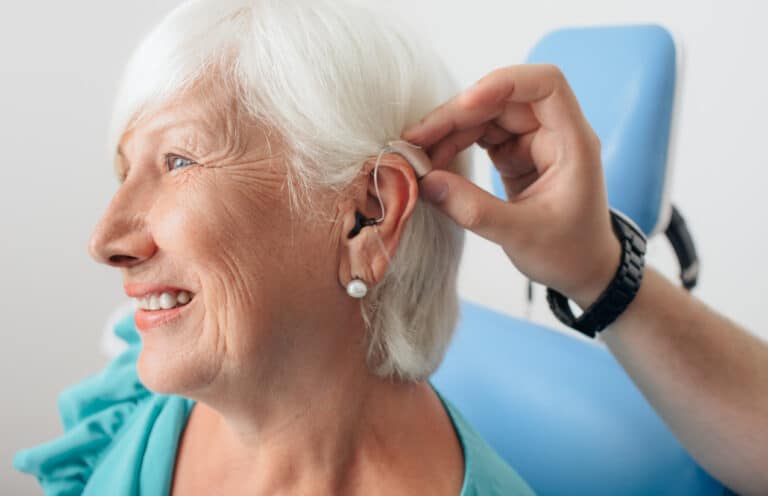Approximately 28.8 million people in the United States could benefit from hearing aids. These small but mighty devices collect and amplify speech while filtering out background distractions to help you communicate with the world.
If you just completed a hearing test that revealed the need for hearing aids, you’re probably wondering what the next steps look like. Specifically, what do the selection and fitting appointments entail?
The Hearing Aid Selection Appointment
Using the results from a pure tone hearing test, your specialist will determine the amount of amplification you require. Based on that decision, they’ll recommend a type of hearing aid. The smaller the device, the less amplification it provides. Standard options include:
- Behind-the-ear (BTE). BTE hearing aids offer the greatest amplification for people with mild to profound hearing loss. They sit comfortably behind the ear with a small tube connecting to an earmold or dome in or next to the ear canal.
- Receiver-in-the-canal (RIC). RIC devices are similar to BTE options but have the speaker inside the ear canal.
- In-the-ear (ITE). ITE devices sit in the outer bowl of the ear, filling either half the bowl or most of it.
- In-the-canal (ITC). ITC devices sit partly in the ear canal for a more discreet appearance than their ITE counterparts.
- Completely-in-the-canal (CIC). CIC devices sit deep in the canal for a nearly invisible option. They feature a short pull cord for easy insertion and removal, making them ideal for individuals with mild to moderate hearing loss.
If you select a custom-fit model, such as an ITE or ITC device, your specialist will take an earmold impression and send it to the manufacturer for production. You will likely select your hearing aids during your initial testing appointment.
The Hearing Aid Fitting Appointment
It will likely take a couple of weeks for the manufacturer to make and ship your devices. Once they arrive, you’ll attend a fitting appointment. During the fitting, your specialist will show you your devices to verify that they’re the ones you wanted and review the different features they offer.
Next, they’ll program the devices based on your volume and frequency needs. Professional programming is crucial because it’s completely tailored to support the sounds you struggle to hear.
After completing the base programming, they’ll help you set up advanced features like noise cancellation, quiet modes for use at home or during trips to the Houston Library, tinnitus masking, wind suppression and more. Finally, they’ll schedule a follow-up appointment to fine-tune your hearing aids.
For more information on your hearing aids or to schedule an appointment, contact Hearing Systems today.

